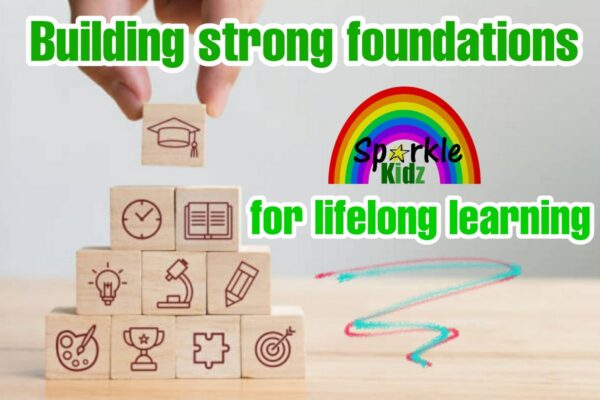Spanish Grammar: When To Use Ser And Estar
The verbs ser and estar are notorious for giving Spanish learners a bit of trouble. Not only are they two of the most common Spanish verbs in existence, but they also don’t have similar counterparts in English. They both translate to the same verb: “to be.” Depending on the context, then, one English word can be translated entirely differently. The verbs in “She is tall.” and “She is tired.” are not the same.
The good news is that the two “to be”s are not random. It may seem strange to a native English speaker, btu the reason why ser and estar are different is because they really do mean two different thigns. There are a few rules that will help you easily master these two important verbs. And once you do, learning Spanish will seem a lot easier. We break down the use cases with lots of examples below.

The Differences Between Ser And Estar
Using Ser
The general rule of thumb for ser is that you use it when you’re describing an unchangeable state. For example, you would introduce yourself as Yo soy [name] instead of Yo estoy [name] because, barring any major life choices, your name is pretty much always the same. Thinking of ser as referring to permanent states of being is useful in itself, but there are a few broad categories that help illustrate this point.
Identities
As mentioned in the intro, when referring to someone’s name or any other identifying features, you use ser. You also talk about the relationship between two people using ser.
- Yo soy Isabela. — I am Isabela.
- Él es mi hermano. — He is my brother.
- Nosotros somos los Tres Mosqueteros. — We are the Three Musketeers.
Professions
Somewhat similar to identity, a person’s job or occupation is also noted with ser. A profession can change, but it’s still a semi-permanent state.
- Ellos son estudiantes. — They are students.
- Anna es actriz. — Anna is an actress.
- Tú eres abogado. — You’re a lawyer.
Origin Or Nationality
You can’t change where you’re from, and so it makes sense this is another important use of ser.
- Eres de República Dominicana. — You’re from the Dominican Republic.
- Soy americana. — I’m American.
- Ellas son francesas. — They’re French.

Characteristics
This category is probably one of the most difficult to wrap your head around, because the line between a characteristic (ser) and a condition (estar, see below for more) can seem a bit hazy. Depending on which verb you use, the meaning can also shift. Ella está feliz means “She is happy” momentarily, but Ella es feliz might mean “She is a happy person.” One way to think of it is that a characteristic is something you know about a person even if you haven’t seen them in a little while. Inanimate objects are also usually described with ser because they don’t change much.
- Soy guapo. — I am handsome.
- El juguete es de plástico. — The toy is plastic.
- Ellos son groseros. — They’re rude.
Location (Events)
If you’re talking about the location of a person or thing, you’ll use estar (see below). But for events, you’ll need to use ser.
- La fiesta es en el parque. — The party is in the park.
- La conferencia es en la sala de clase. — The lecture is in the classroom.
Time And Date
When you’re saying what day it is or what time it is, you always use ser. This might seem a little counterintuitive, because time (by its very nature) is always changing, but it’s easy enough to remember once you’ve learned it.
- Hoy es miércoles. — Today is Wednesday.
- Es ocho en la mañana. — It’s eight in the morning.
- Es el tres de mayo. — It’s the third of May.
Using Estar
If ser is used with things that don’t change much, estar is for those cases where things do change. That can seem a little vague, so once again, let’s chop this up into separate categories.
Emotions
Feelings are by their very nature changeable, so it only makes sense that they would use estar.
- Estoy feliz. — I’m happy.
- Ella está triste. — She’s sad.
- Nosotros estamos enojadas. — We’re angry.
Conditions
Conditions go hand-in-hand with emotions, but as mentioned above, they’re also easy to mix up with characteristics. Again, the rule of thumb is that conditions are temporary, but don’t feel bad if you get this one wrong when you’re starting out. There are also some confusing exceptions. For example, you have to use estar when saying someone is dead (Ella está muerta.) even though that is the ultimate permanent condition.
Conditions don’t only have to refer to people, either. There are also conditions for the weather, animals, inanimate objects and more.
- Ellas están cansadas. — They’re tired.
- Estoy embarazada. — I’m pregnant.
- El gato está dormido. — The cat is asleep.
- Está lloviendo. — It’s raining.
Actions
The verb “to be” is also frequently paired with other verbs to describe something that is or was in the process of happening. You are driving, he is shopping, they were dancing and so on. When you’re describing actions like these, you’ll always use estar. Depending on the sentence, the verb form will be different, but that’s a whole different can of worms.
- El equipo está perdiendo. — The team is losing.
- Estabas hablando. — You were talking.
- Nosotros estamos caminando. — We’re walking.
Location
Except for events, you’ll use estar for the location of anything, whether it be a person or a building.
- Ella está en el baño. — She’s in the bathroom.
- La Sagrada Familia está en Barcelona. — The Sagrada Familia is in Barcelona.
- El banco está afuera. — The bench is outside.
View this post on Instagram
When To Use Ser And Estar Quiz
Alright, let’s see if you were paying attention. You should be able to answer all of the following questions based on the information given above. Good luck!





